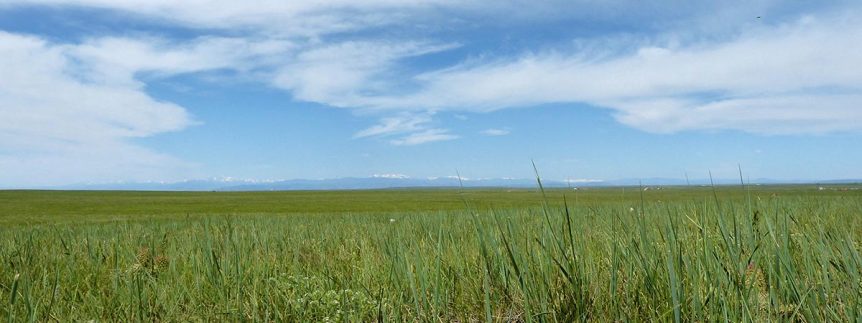Read the Transcript
We’ve been talking about invasive woody plants advancing across the Plains, that sap the water, inhibit grass growth and confuse game and nongame wildlife — specifically, tamarisk or saltcedar, the Russian olive tree, eastern redcedar and the reed plant.
Today, more news about weed control efforts, this time in central Nebraska where phragmites — the common reed plant — is a terrific problem, according to Kirk Schroeder of Grand Island, with U.S. Fish and Wildlife Service.
“It occupies shallow water kind of habitat and it spreads really, really rapidly and pinches off some of our river systems.”
Then there’s the Russian olive tree — that ornamental might look pretty, but it’s a real pest along Nebraska’s rivers. Schroeder says Russian olives advance very quickly.
“They’re invading a lot of the meadows or lowland grasslands right next to our river courses. They’re dominating the understory of the riparian areas along a lot of our river courses. So they’re really eliminating that wet, lowland grassland and kind of dominating that riparian zone along a lot of river courses. They not only eliminate a lot of that native grassland habitat or riparian habitat, but in some cases Russian olive can also be a pretty high water user.”
Their seeds are carried through the landscape by birds and other wildlife. These shrubs thrive in poor soil, and are darned hard to kill — they also re-sprout vigorously after cutting or burning. Controlling Russian olive typically involves cutting, followed immediately by application of herbicide.
I was talking to Eva Yearout at Medicine Lodge, Kansas. Her husband Keith manages the Z Bar Ranch in southwest Barber County. We were discussing another topic when we got to talking about the invasion of the eastern redcedar.
“And the scary part is… we went to Nebraska last year, and they’re going up into Nebraska.”
Tom Hartman of Grand Island manages his family’s ranch at Scotia, Nebraska. He knows exactly what Eva’s talking about. He faced an onslaught of eastern redcedar.
“The trees… they’ve really taken over. You lose so much grazing ground because of them.”
He and his neighbors have been working together to control an invasion of cedar.
“We’ve fought them with mechanized removal, and we’ve really gotten into a lot of burning. After we’ve removed a lot of the trees, we come in and burn it. We get a lot of tiny cedars coming up from underneath where those bigger cedars were at.”
Hartman and the neighbors have had a lot of help getting rid of the pest.
“The Fish and Wildlife [Service] and a lot of their cooperators like [National Wild] Turkey Federation, Pheasants Forever and Nebraska Game and Parks — they’ve all been involved in funding. We couldn’t have done it without them, especially when you’re talking about thousands of acres.”
David Kraft is a rangeland management specialist with the Natural Resources Conservation Service at Emporia, Kansas, and is himself a rancher. He echoes Hartman’s sentiment. Control of these invasives is too big and too expensive for the rancher to tackle alone. These projects typically are too big for any one state or federal agency, even. Kraft says ranchers have seen the good that’s come out of these partnerships.
“You go to a meeting and you see ranchers, and you see private landowners, and you see absentee landowners, and you see state agencies and federal agencies and non-governmental organizations, all sitting around the table with that common goal. That’s really been a positive thing that’s happened over the past 20 years.”
Federal and state agencies make funds available to landowners to help defray the cost of weed control.
Playa Country, which ended in late 2016, was a weekly show that featured conservation and wildlife experts — as well as farmers, ranchers and land managers — talking about conservation practices that improve wildlife habitat and landowners’ bottom-line. Originally broadcast in June 2012.

